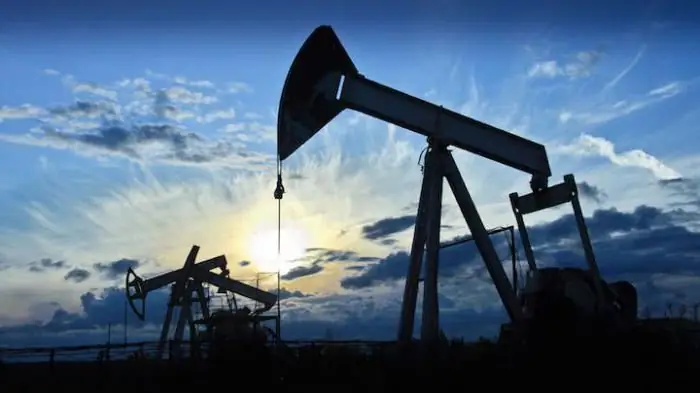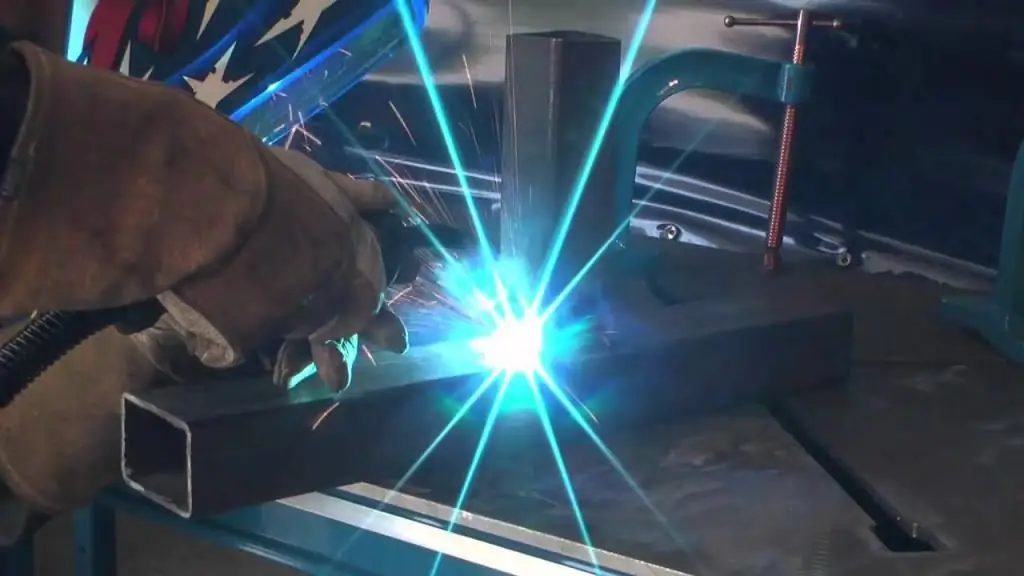2025 Author: Howard Calhoun | [email protected]. Last modified: 2025-01-24 13:10:33
A gas turbine is an engine in which, in the process of continuous operation, the main organ of the device (rotor) converts the internal energy of gas (in other cases, steam or water) into mechanical work. In this case, the jet of the working substance acts on the blades fixed around the circumference of the rotor, setting them in motion. In the direction of the gas flow, turbines are divided into axial (gas moves parallel to the axis of the turbine) or radial (perpendicular movement relative to the same axis). There are both single and multi-stage mechanisms.

A gas turbine can act on blades in two ways. Firstly, it is an active process, when gas is supplied to the working area at high speeds. In this case, the gas flow tends to move in a straight line, and the curved blade part standing in its way deflects it, turning itself. Secondly, it is a reactive type process, when the gas supply rate is low, but high pressures are used. Jet-type engines are almost never found in their pure form, because in their turbines there is a centrifugal force that acts on the blades along with the reaction force.

Where is the gas turbine used today? The principle of operation of the device allows it to be used for drives of electric current generators, compressors, etc. Turbines of this type are widely used in transport (ship gas turbine installations). Compared to steam analogues, they have a relatively small weight and dimensions, they do not require the arrangement of a boiler room, a condensing unit.
The gas turbine is ready for operation fairly quickly after start-up, develops full power in about 10 minutes, is easy to maintain, requires little water for cooling. Unlike internal combustion engines, it does not have inertial effects from the crank mechanism. A gas turbine plant is one and a half times shorter than diesel engines and more than twice as light. The devices have the ability to run on low quality fuel. The above qualities make it possible to consider engines of this kind of particular interest for hovercraft and hydrofoils.
The gas turbine as the main component of the engine has a number of significant drawbacks. Among them, high noise is noted, less than that of diesel engines, efficiency, a short period of operation at high temperatures (if the gas medium used has a temperature of about 1100 up to 750 hours on average).

The efficiency of a gas turbine depends on the system in which it is used. For example, devicesused in the power industry with an initial temperature of gases above 1300 degrees Celsius, with an air compression ratio in the compressor of not more than 23 and not less than 17, have a coefficient of about 38.5% in autonomous operations. Such turbines are not very widespread and are mainly used to cover load peaks in electrical systems. Today, about 15 gas turbines with a capacity of up to 30 MW operate at a number of thermal power plants in Russia. On multi-stage plants, a much higher efficiency (about 0.93) is achieved due to the high efficiency of structural elements.
Recommended:
Work permit for work in electrical installations. Rules for work in electrical installations. Work permit

From August 2014, Law No. 328n comes into force. In accordance with it, a new edition of the "Rules on labor protection during the operation of electrical installations" is being introduced
Energy gas turbine installations. Cycles of gas turbine plants

Gas turbine units (GTP) are a single, relatively compact power complex, in which a power turbine and a generator work in pairs. The system has become widespread in the so-called small power industry
Why does the ruble depend on oil and not on gas or gold? Why does the ruble exchange rate depend on the price of oil, but the dollar exchange rate does not?

Many in our country are wondering why the ruble depends on oil. Why is it that if the price of black gold decreases, the price of imported goods rises, is it more difficult to get out to rest abroad? At the same time, the national currency becomes less valuable, and with it, all savings
Welding in a shielding gas environment: work technology, process description, execution technique, necessary materials and tools, step-by-step work instructions and expert advice

Welding technologies are used in various branches of human activity. Versatility has made welding in a protective gas environment an integral element of any production. This variety makes it easy to connect metals with a thickness of 1 mm to several centimeters in any position in space. Welding in a protective environment is gradually replacing traditional electrode welding
Gas turbine power plants. Mobile gas turbine power plant

For the functioning of industrial and economic facilities located at a considerable distance from the centralized power lines, small-scale power generating installations are used. They can operate on various types of fuel. Gas turbine power plants are most widely used due to their high efficiency, ability to generate thermal energy and a number of other features

